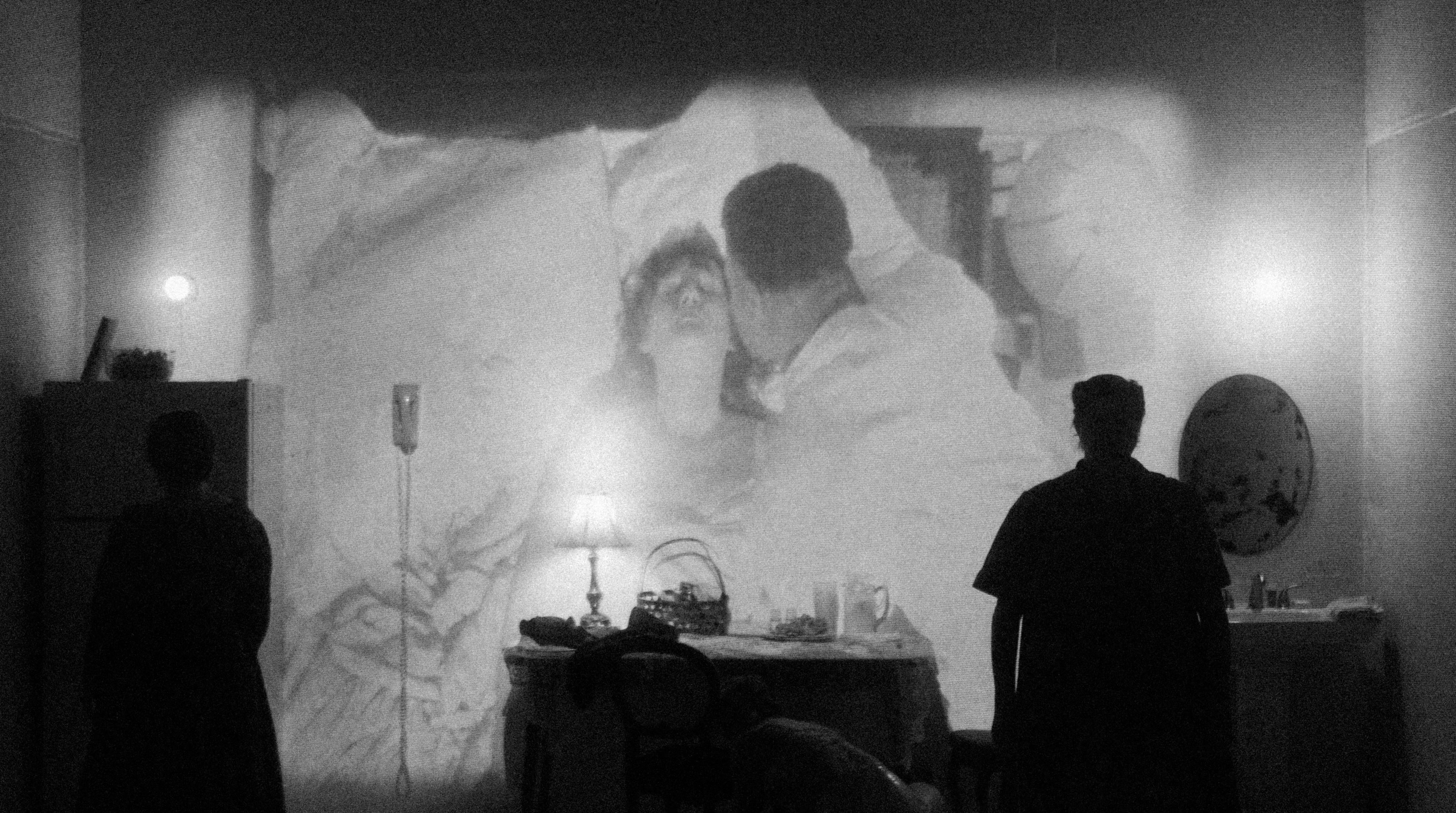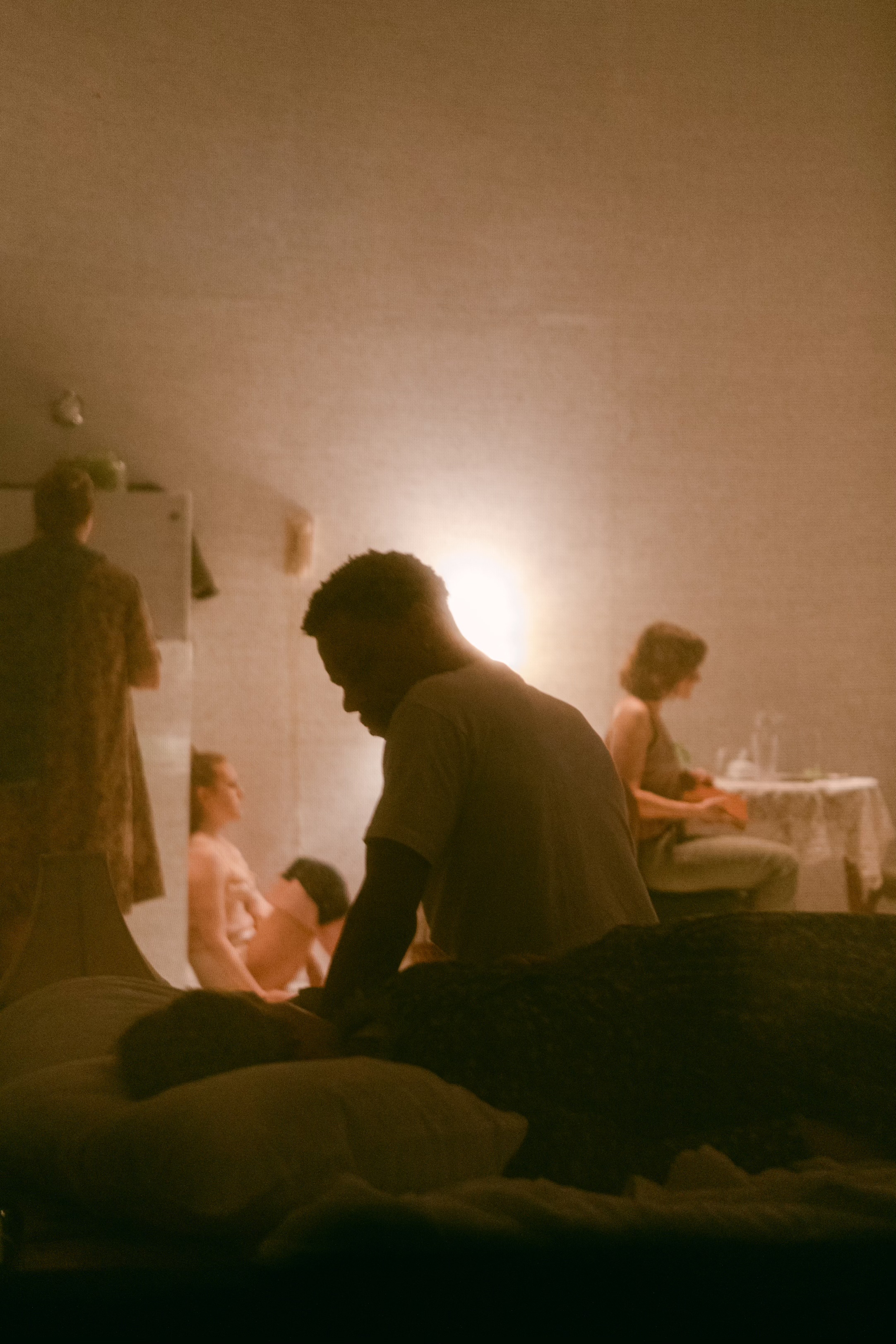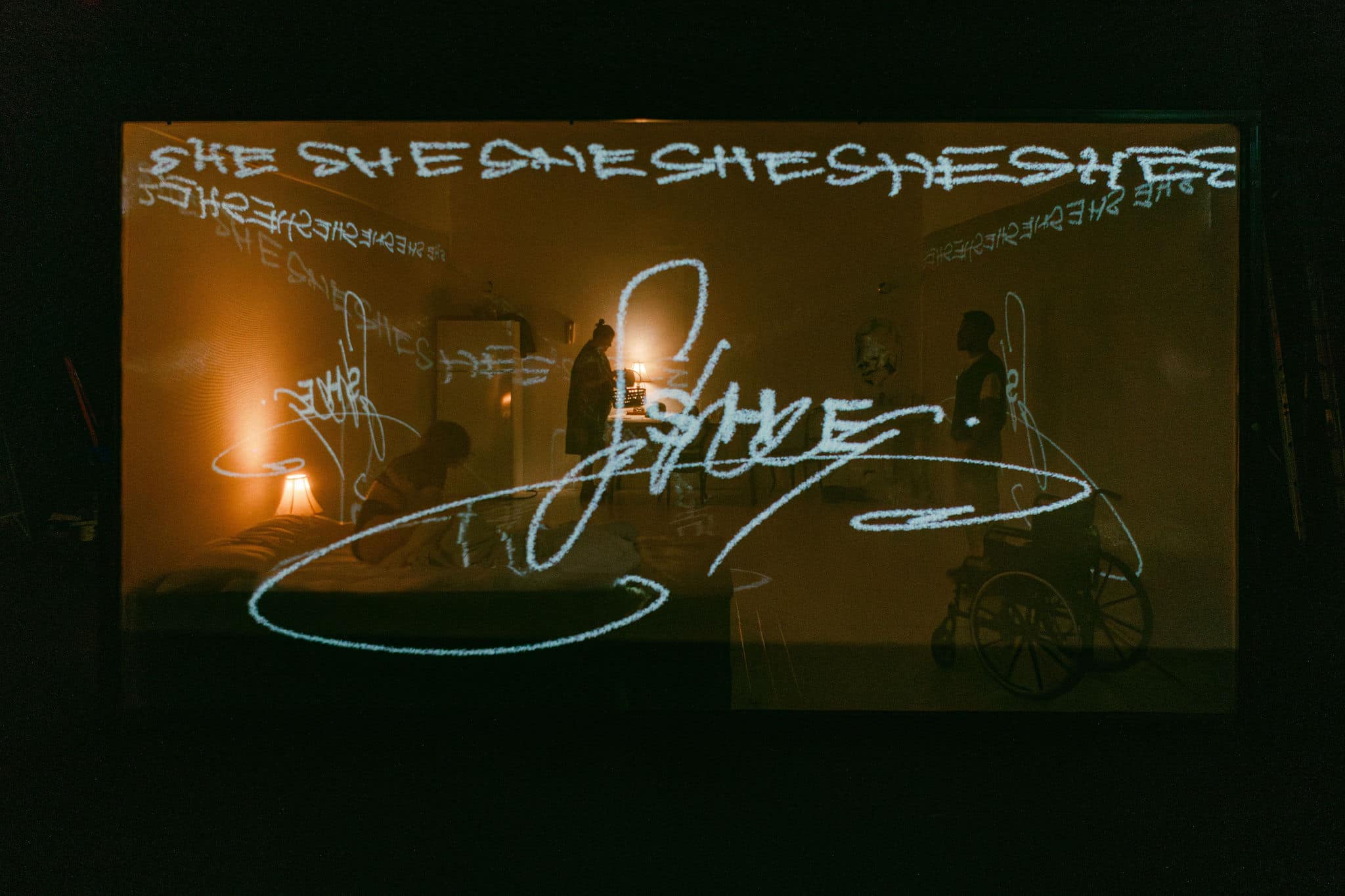SCENIC DESIGN for
VERNAL AND SERE THEATRE in ATLANTA, GA at the WINDMILL ARTS CENTER
“She said,
When you see these horrible images why do you stay with them?
Why keep watching? Why not / go away? I was amazed.
Go away where? I said.
This still seems to me a good question.”
WRITTEN AND DIRECTED BY SAWYER ESTES
SETS + ANIMATION DESIGN BY JOSH OBERLANDER
LIGHTS BY LINDSEY SHARPLESS
COSTUMES BY ERIN O’CONNOR
SOUND BY ZACH HALABY AND KACIE WILLIS
PROJECTIONS BY HANNAH ALLINE AND MATTHEW SHIVLEY
For the collective Vernal and Sere’s 10th production, they staged a word-for-word adaptation of Anne Carson's seminal poem, wherein a woman returns home to her cloistered mother following a devastating romantic breakup, carrying with her a stack of books on the life and work of Emily Brontë. Through razor-sharp examination of Brontë and extended, lyrical meditations upon the loss of love, the play asks what it might feel like to be truly alive and attempts, by some approximation, to capture it. The Glass Essay utilized the mediums of naturalist theatre, modern dance, poetry, lecture, photography, and film to investigate what it means to be broken and how one might come into a kind of repair.
“The scenic design by Josh Oberlander is very special, Estes said. The entire play will be staged within a large, metal box in the center of the stage, like a diorama, surrounded by scrim that will have images and video created by Haley James projected upon it.“ - Benjamin Carr for ArtsATL
“I am immediately made aware of the production’s materiality upon stepping foot into the black box at the Windmill Arts Center, where VST is one among several resident collectives. The space is completely transformed for The Glass Essay. A square of white scrim has been constructed to house the set, a spare room furnished with a bed, kitchen appliances, a small table and chairs, a storage chest, and a wheelchair. The audience, seated on three sides, remains separated from the performers by the gauzy barrier for the duration of the show. ... I can just make out the shape of a man standing at the foot of the bed, where a woman lies asleep. These figures, already rendered ill-defined by the scrim, are further obscured by the projection of a seemingly endless stream of sepia-toned photographs displaying the two of them in full couple mode -- limbs tangled, laughing, sharing in effervescent eros. Once the show begins and lights come up on the set within the sheer cube, the obfuscation lessens considerably, but I am never not aware of the fabric wall between myself and the performers.” – Asia Meana, “A Self Reflect in Vernal and Sere’s The Glass Essay”
VERNAL AND SERE THEATRE in ATLANTA, GA at the WINDMILL ARTS CENTER
THE GLASS ESSAY
“She said,
When you see these horrible images why do you stay with them?
Why keep watching? Why not / go away? I was amazed.
Go away where? I said.
This still seems to me a good question.”
WRITTEN AND DIRECTED BY SAWYER ESTES
SETS + ANIMATION DESIGN BY JOSH OBERLANDER
LIGHTS BY LINDSEY SHARPLESS
COSTUMES BY ERIN O’CONNOR
SOUND BY ZACH HALABY AND KACIE WILLIS
PROJECTIONS BY HANNAH ALLINE AND MATTHEW SHIVLEY
For the collective Vernal and Sere’s 10th production, they staged a word-for-word adaptation of Anne Carson's seminal poem, wherein a woman returns home to her cloistered mother following a devastating romantic breakup, carrying with her a stack of books on the life and work of Emily Brontë. Through razor-sharp examination of Brontë and extended, lyrical meditations upon the loss of love, the play asks what it might feel like to be truly alive and attempts, by some approximation, to capture it. The Glass Essay utilized the mediums of naturalist theatre, modern dance, poetry, lecture, photography, and film to investigate what it means to be broken and how one might come into a kind of repair.
“The scenic design by Josh Oberlander is very special, Estes said. The entire play will be staged within a large, metal box in the center of the stage, like a diorama, surrounded by scrim that will have images and video created by Haley James projected upon it.“ - Benjamin Carr for ArtsATL
“I am immediately made aware of the production’s materiality upon stepping foot into the black box at the Windmill Arts Center, where VST is one among several resident collectives. The space is completely transformed for The Glass Essay. A square of white scrim has been constructed to house the set, a spare room furnished with a bed, kitchen appliances, a small table and chairs, a storage chest, and a wheelchair. The audience, seated on three sides, remains separated from the performers by the gauzy barrier for the duration of the show. ... I can just make out the shape of a man standing at the foot of the bed, where a woman lies asleep. These figures, already rendered ill-defined by the scrim, are further obscured by the projection of a seemingly endless stream of sepia-toned photographs displaying the two of them in full couple mode -- limbs tangled, laughing, sharing in effervescent eros. Once the show begins and lights come up on the set within the sheer cube, the obfuscation lessens considerably, but I am never not aware of the fabric wall between myself and the performers.” – Asia Meana, “A Self Reflect in Vernal and Sere’s The Glass Essay”











